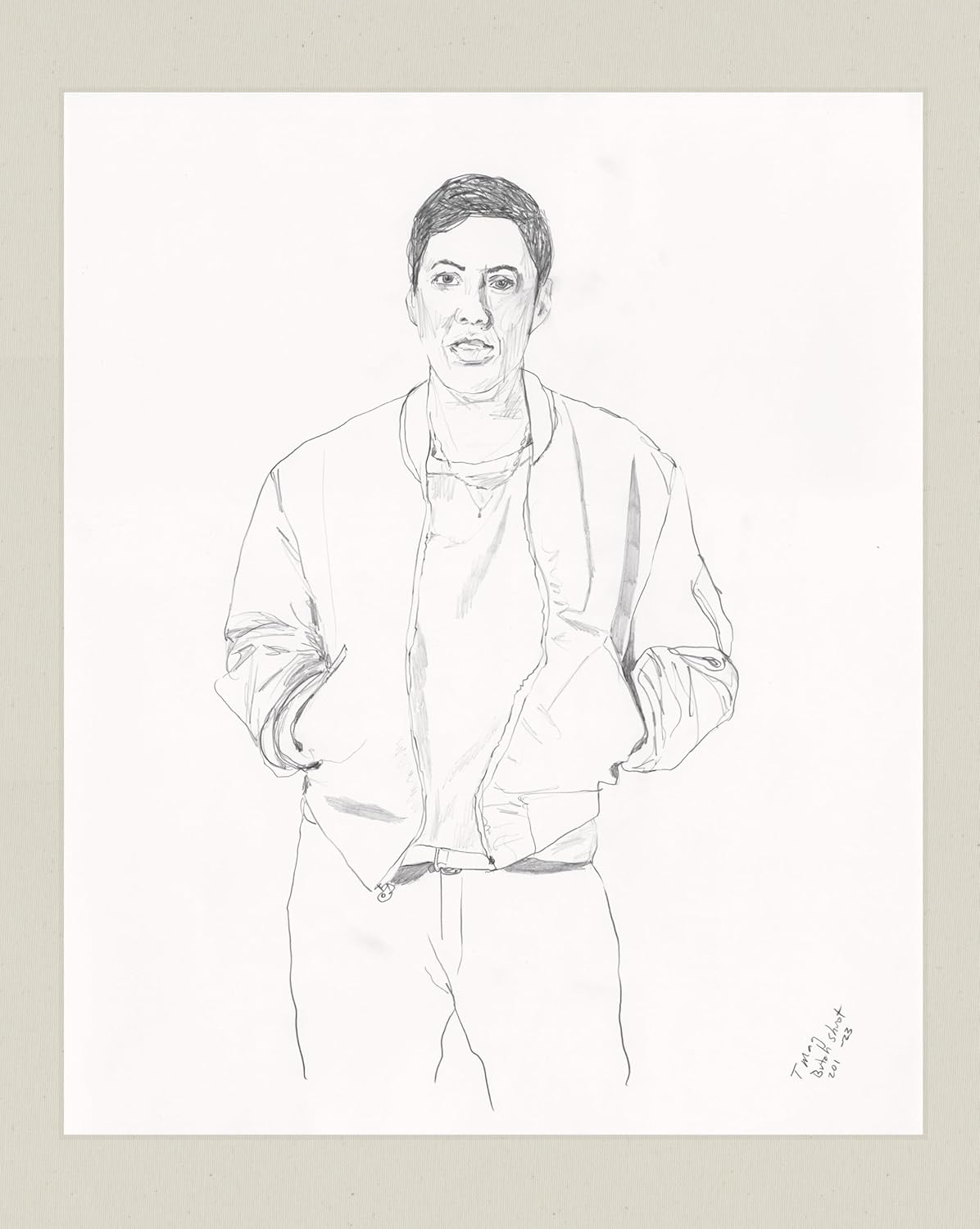
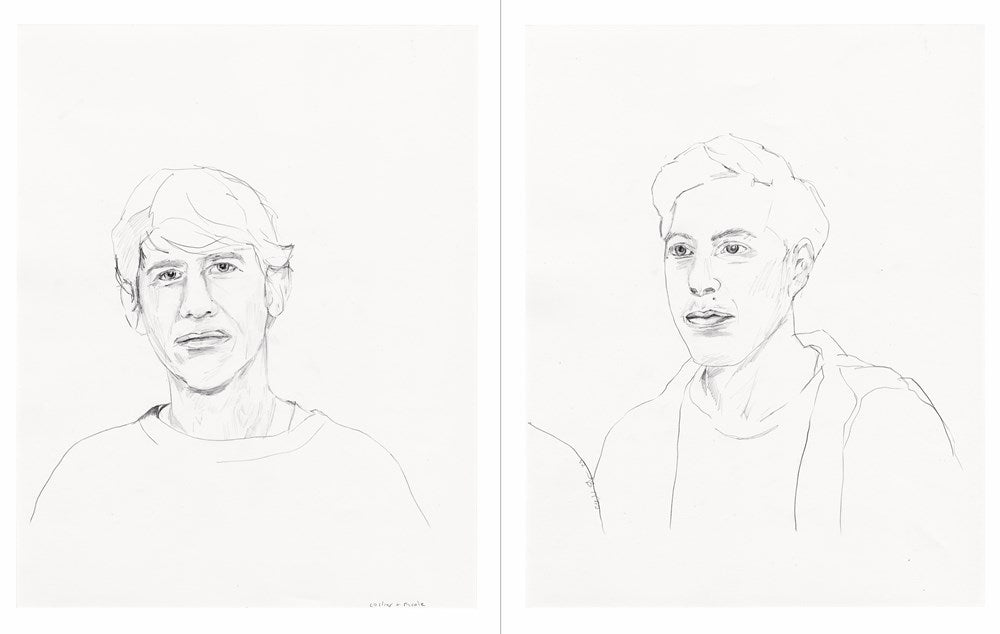
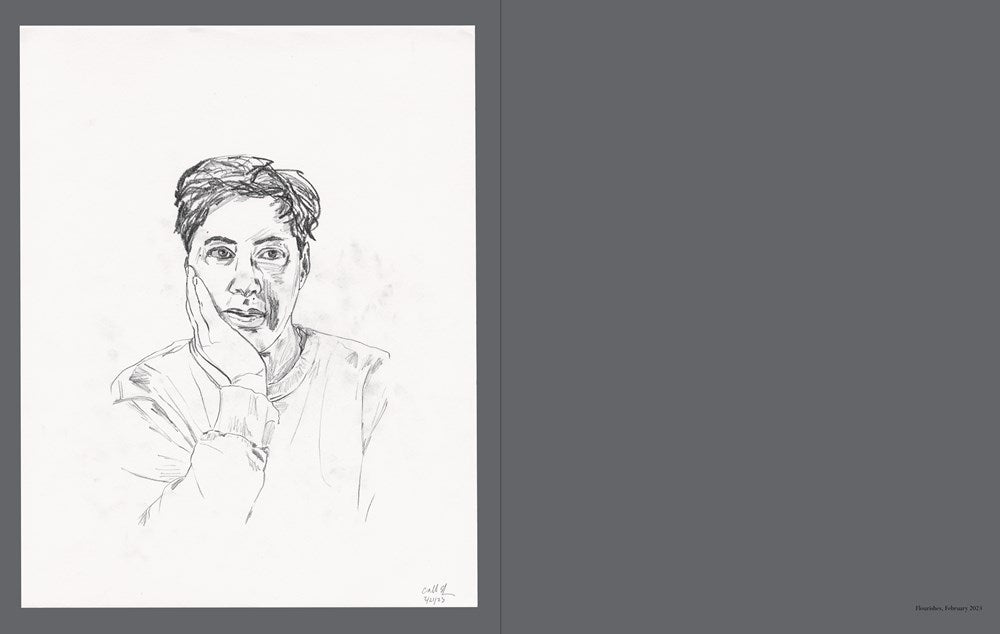
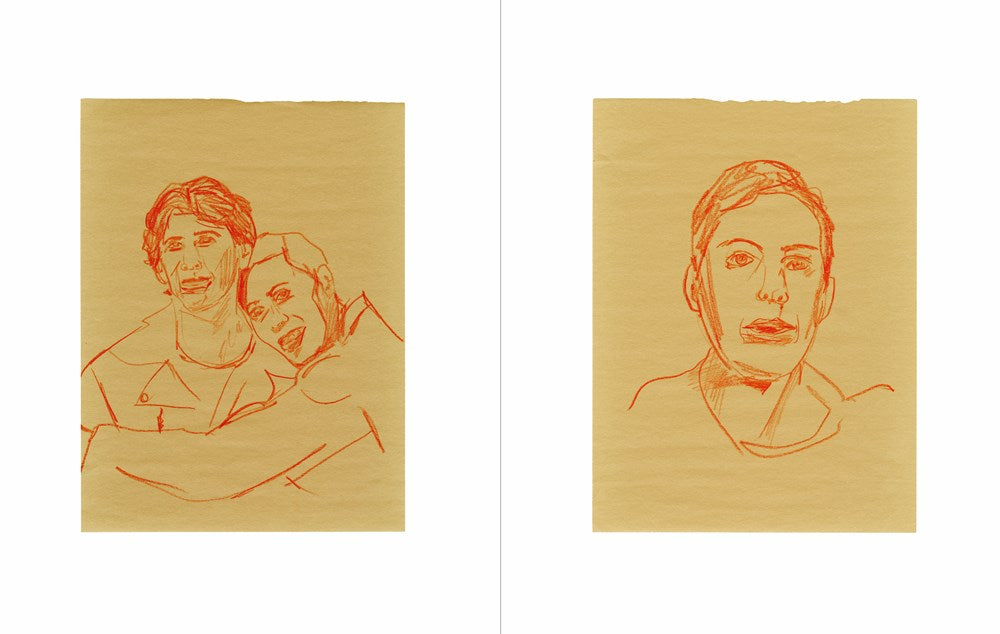
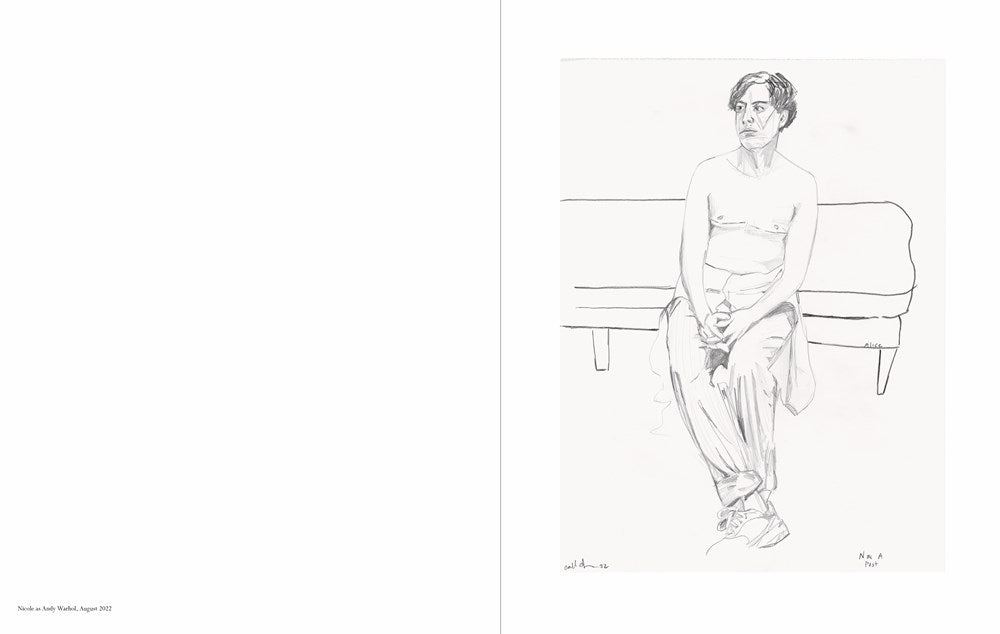
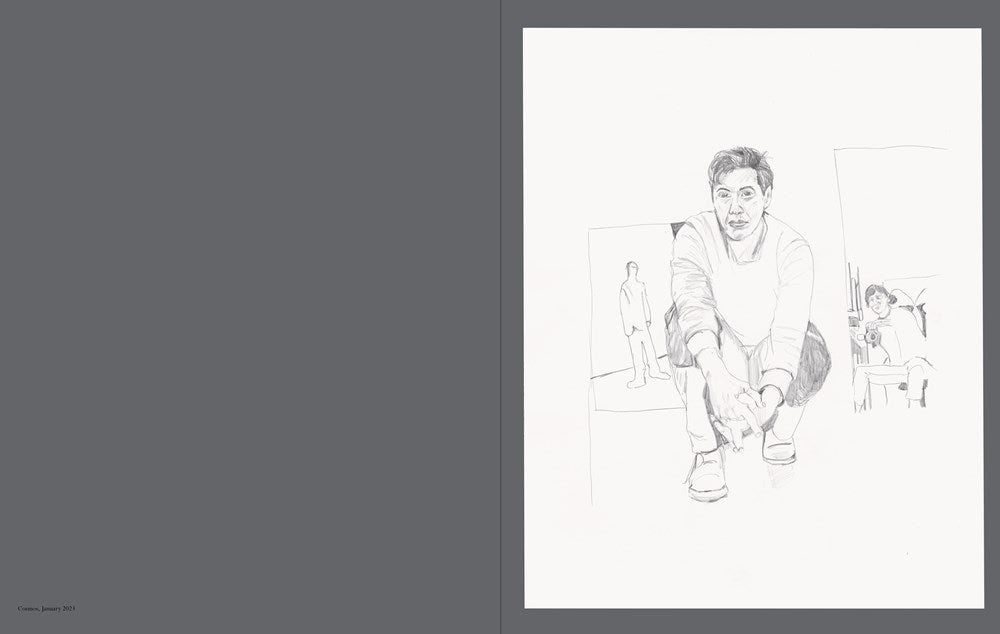
Cosmos
Collier Schorr began drawing photographs she had taken of the artist Nicole Eisenman in 2020, a solitary practice that had its roots in the fascination of the doppelganger and the possibility of seeing one's face in another. While Schorr and Eisenman have known each other since the 1980s, the photographs used were recent, as formal as shoots for T Magazine and the New Yorker and as offhand as selfies taken at neighbourhood coffee shops and studio visits. This volume, sequenced in Schorr's unmistakable narrative style, brings together drawn portraits, selfies, and self-portraits, both staged and candid, in recognisable spaces and emerging from the blank page. In one image, the cover of a Susan Sontag biography floats like a spectre, uneasy in its proximity to the queer figures asserting themselves between the pages. Interleaved among these are drawings Eisenman traded with Schorr, Schorr's photographs, and a small zine Eisenman gave to Schorr in 1987, bound into the book's pages.
Schorr sees these drawings as works that think about photography and escape it simultaneously. A photograph will always share authorship between photographer and subject, while a drawing registers a different form of physical attention and collaboration. It engages bodies and space, and creates ambiguity where photography is conclusive - through a loss of concrete setting, or an absence of age. Instead of acting as a conventional muse, Eisenman - one of the great painters of her generation - is studied and prized as an antidote to the parade of male artists enshrined in art history. The porous worlds of queer culture operate much more closely than those of photography and painting. COSMOS explores the way these two figures inhabit many orbits, existing as mortals as well as images in their work and their communities.
Schorr sees these drawings as works that think about photography and escape it simultaneously. A photograph will always share authorship between photographer and subject, while a drawing registers a different form of physical attention and collaboration. It engages bodies and space, and creates ambiguity where photography is conclusive - through a loss of concrete setting, or an absence of age. Instead of acting as a conventional muse, Eisenman - one of the great painters of her generation - is studied and prized as an antidote to the parade of male artists enshrined in art history. The porous worlds of queer culture operate much more closely than those of photography and painting. COSMOS explores the way these two figures inhabit many orbits, existing as mortals as well as images in their work and their communities.

Cosmos
Angebot€75,95
Regulärer Preis€75,95 (/)
Sie können auch mögen...
Gewicht
1.3 kg
Maße
28.5 x 1.7 x 36
Abdeckung
Hardcover
Seiten
80
Sprache
Farbe
ISBN:

